Awamori: 5 Reasons Why This Island Sake Deserves Our Attention Now
Why Okinawa's Signature Alcohol Should Become Japan's Next Big Hit
Kampai to Awamori — Okinawa's, no, Japan's next miracle drink!
On an early February Sunday evening, I found myself in a small Italian restaurant in Tokyo’s Shimbashi where I was invited to taste a unique product from Okinawa: a newly designed contemporary awamori, the island’s signature sake. I was also there to learn about the essence of awamori, a drink I knew very little of: I had heard that it was a very strong alcohol, that it was mostly consumed by elderly folks, and that it was nothing more than a local serve.
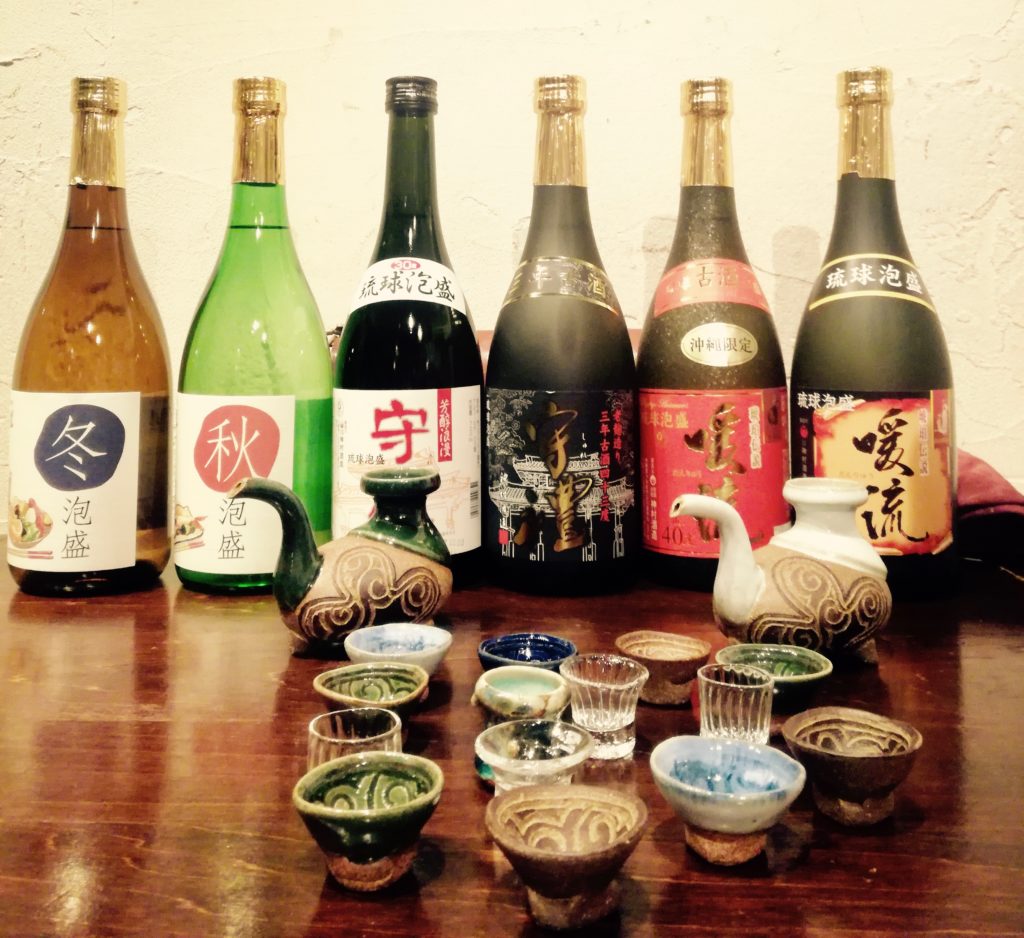
Awamori and chibuguwa, traditional small cups used to drink the liquor.
The image I had in mind is — quite regrettably — one that is shared by the majority of non-Okinawans. Produced solely in Okinawa and consumed almost entirely on the island (around 80 percent), the sake for many people remains nothing but a distant taste; a souvenir sip we would occasionally have while traveling south.
Yet, just like most treasures, awamori is yet to be discovered. With a history of over 600 years, it is Japan’s oldest distilled liquor, and one that has a deeply rooted culture very few drinks in the world can pride themselves with. Here are five reasons why awamori is special and why it could (and should) become Japan’s next big hit.
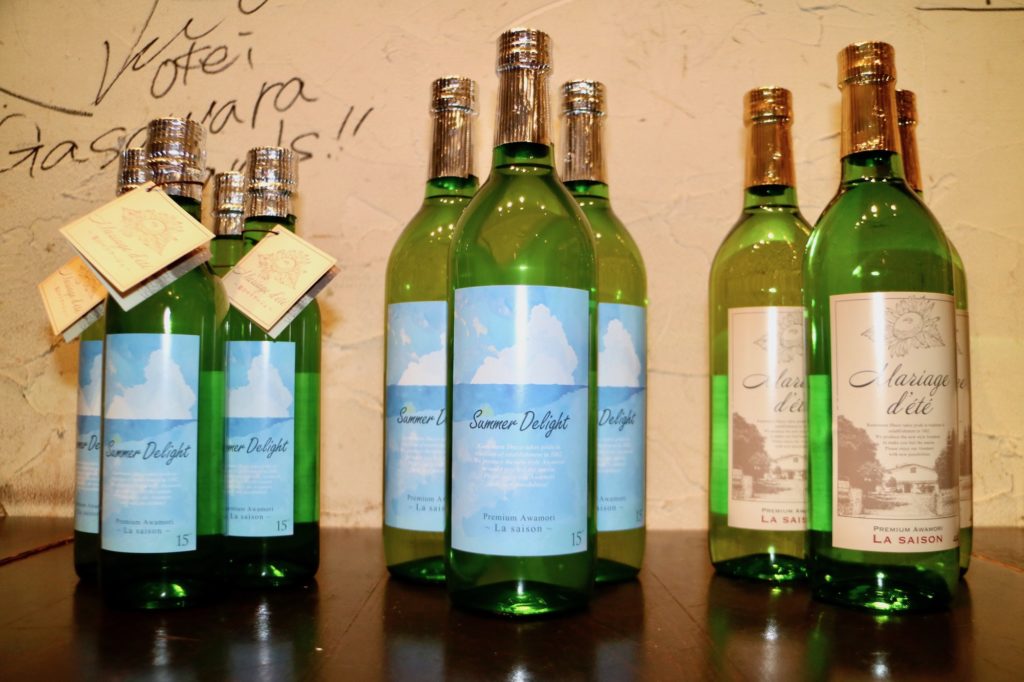
An image bound to change: Summer Delight and Mariage D’ete, two contemporary awamori products currently under development.
1. Beyond a drink, awamori is a living history
Awamori, first introduced to Okinawa from Thailand, has been the official liquor of Japan’s southernmost island since it was still known as the Ryukyu Kingdom (1429-1879). The island’s sake industry, however, was almost completely wiped out during WWII. During the horrific Battle of Okinawa, one could have found more awamori bottles in caves where people desperately hid (or tragically perished) than in stores and distilleries: air raids had destroyed all but one distillery on the island, the Tsukayama Distillery, which the U.S. troops had seized and used as an office, barracks and a bread factory until 1947. After the end of the war, it was returned to the owning family and was listed as a national cultural heritage site in 2009.
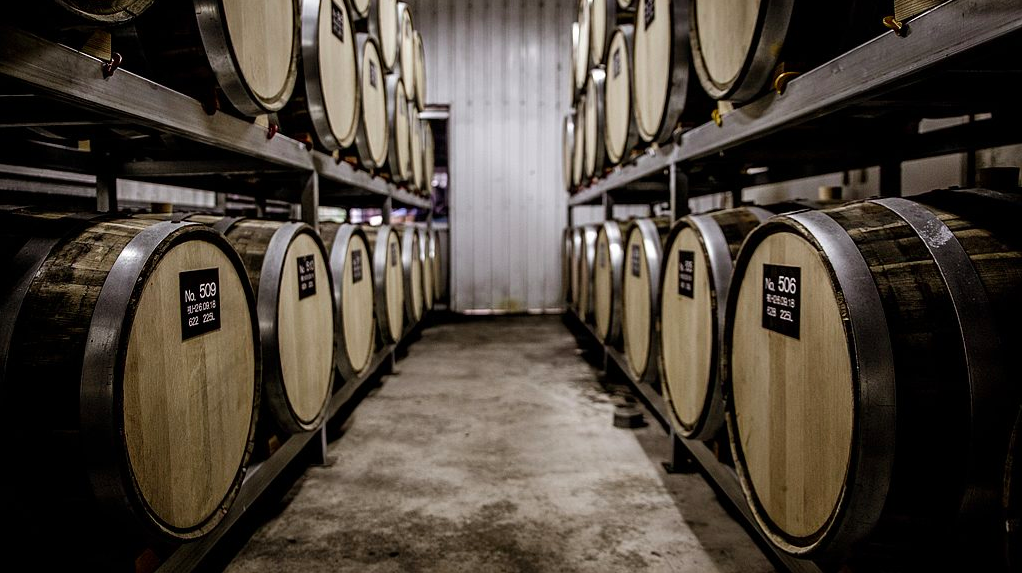
Today, there are 46 distilleries in Okinawa and production of its “island sake” is resumed under the locals’ strong determination to restore the industry and preserve the liquor’s cultural pride. To make this possible, after the end of the war, locals dug into burned soil and ground to find remains of black rice mold, a key ingredient needed to make awamori. The sake that rose from the ashes today stays strong telling its story to the rest of the world.
2. It brings people together … literally
“It naturally makes you come closer to each other,” says Hayashi Nakazato, the president of Kamimura Shuzo Distillery, one of Okinawa’s key awamori producers. He says this as he points out to a few sake cups, as tiny as to fit on one’s fingertip. The chibuguwa are a type of ochoko (sake cups), which were used to traditionally drink awamori slowly, sip by sip, while enjoying everyone’s conversation. The cups are so small that the group needs to come close together when having a toast, almost to the point of bumping their heads into each other.
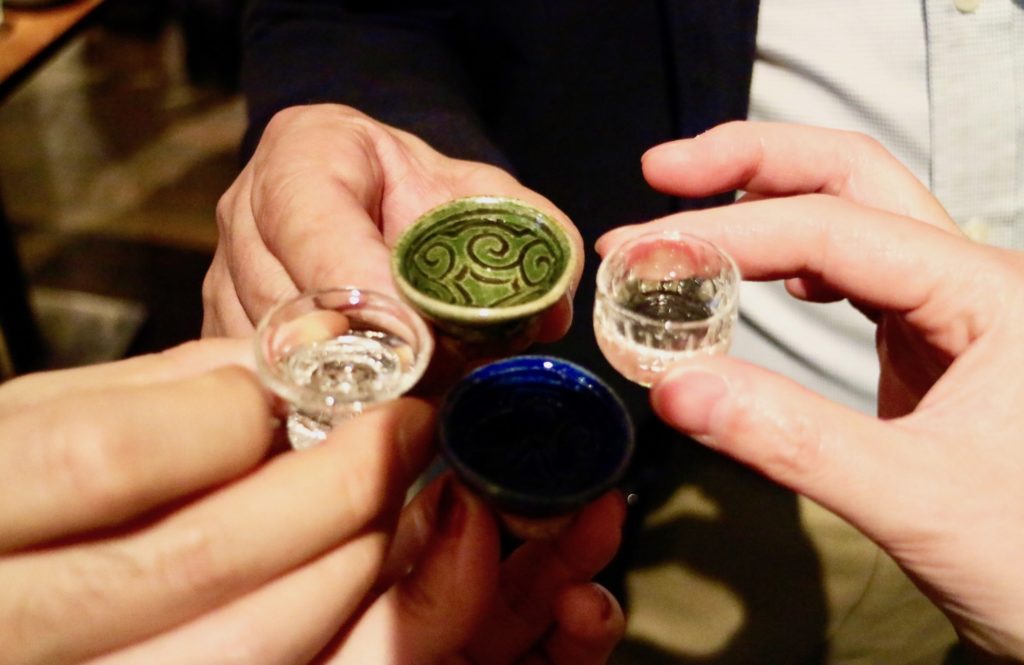
“Unlike wine and beer whose large glasses give a sense of distance from each other, awamori’s sake cups bring us together,” Nakazato clarifies. The cups are used when drinking awamori straight (well, nothing else can fit in them), and when intending to drink for some time — of course, in the company of close friends and drinking buddies.
3. It can be transformed into various drinks
Somewhat similar to shochu in taste yet quite different, awamori is made from Thai rice and black koji rice mold and is the product of a single fermentation process. Though traditionally consumed straight, on the rocks, mixed with hot or cold water, awamori is a highly versatile drink that could be transformed into different cocktails, too. Its transparency in color and strong alcohol taste (around 30 to 40 degrees), brings it on a par with most other cocktail-base liquors such as gin or vodka.
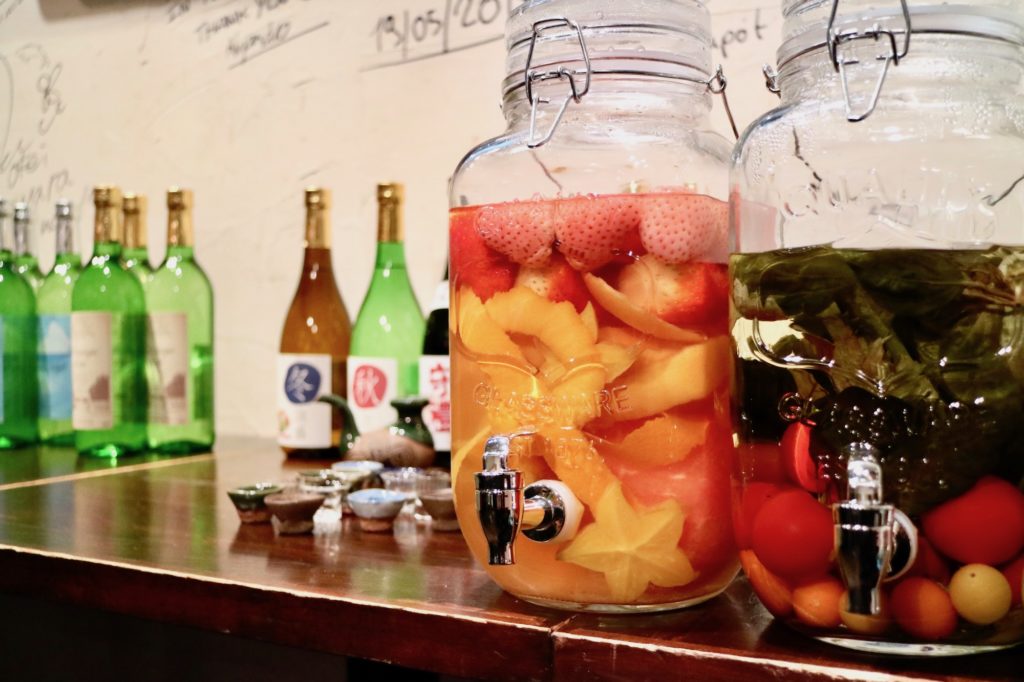
Awamori Sangria (fruit and tomato basil) and awamori in wine bottles in the back.
A great way (that is now increasingly becoming popular among younger consumers) to have it is as sangria. Pour awamori over strawberries, orange, lemon, and mint and store for about two days. When drinking, mix with tonic soda or on the rocks. For something a little more Okinawan, try the Southern Island Okinawa: a 30ml awamori, fruit liqueur, blue Curaçao and pineapple juice, or Goya Cocktail: awamori, white Curaçao, sugar syrup, lemon juice and a few goya slices. Or you can keep it simple by just mixing it with orange juice: you’ll be surprised at how mild and pleasant the taste is!

To borrow the words of Koji Higa, the owner of Bar Awamorisoko in Okinawa where Awamori Sangria is a popular choice, “[Awamori is] a miracle drink.” (See the bar’s original recipe tutorial here)
4. It’s sugar-free and low-calorie
As much as we hate to admit it, alcohol adds much-undesired sugar into our diet, be it beer, shochu, nihonshu (Japanese sake) or wine. Awamori, however, being a distilled alcohol, is a very low-calorie liquor which is completely sugar and protein-free. When mixed with water, it has around 40 kcal less than a cup of nihonshu, which is a low-calorie alcohol in comparison to other hard liquors, such as whiskey and brandy.
Just like most treasures, awamori is yet to be discovered.
Furthermore, a study report conducted on different alcoholic drinks, including whiskey, beer, and wine, suggests that the fibrinolytic enzyme found in awamori could be increasing blood circulation by stimulating plasmin, an enzyme that plays an important role in dissolve blood clots. While research is still ongoing, it is suggested that regular and balanced consumption of awamori could prevent cerebral infarction, strokes and other blood-related life-threatening conditions.
5. It can be paired with any food … and used for cooking too!
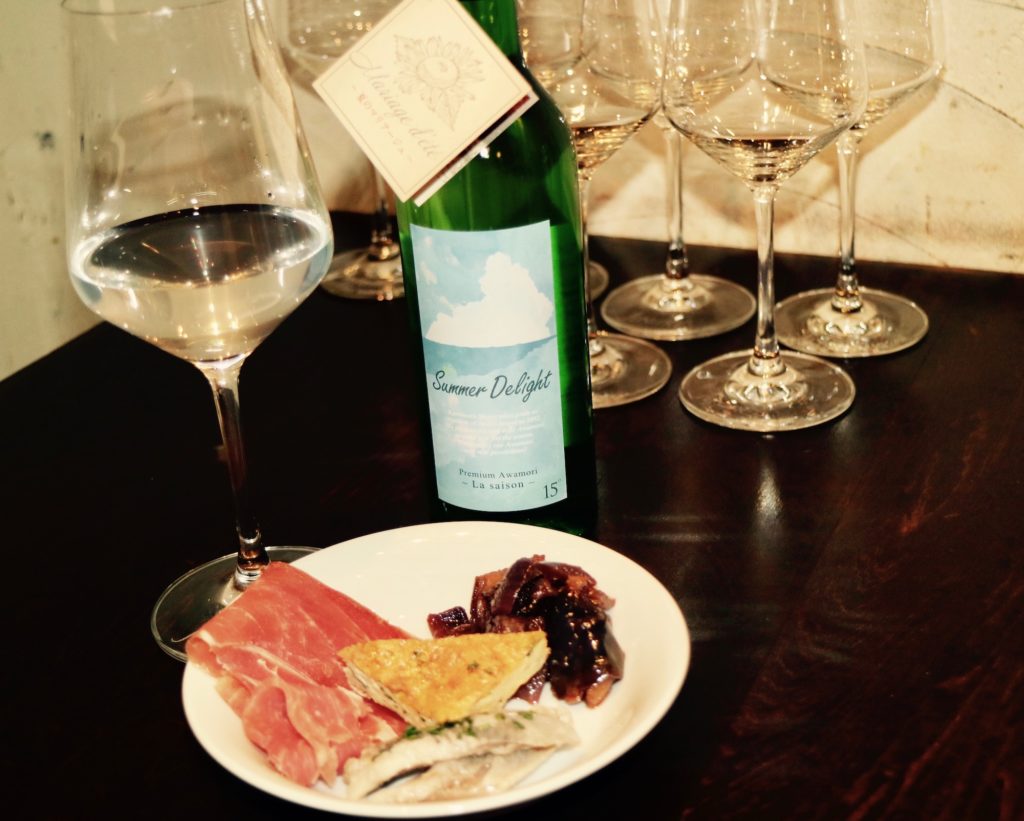
Awamori Summer Delight (a product under development expected to go on sales this summer) paired with Italian cuisine.
French, Italian, American, Japanese or whatever salads and treats you’re into lately — awamori goes well with pretty much any food because it has a relatively mild and refreshing flavor. The event at the Shimbashi restaurant featured sausages, pasta, carpaccio and roasted pork, and the only alcohol served was awamori: almost like a chameleon, it adjusts to the taste of the meal you’re consuming. Since it can be served as any kind of cocktail as well, the pairing with various international dishes comes naturally, and it’s easy and creative.
If you don’t like alcohol with your meals, however, feel free to use awamori simply for cooking too — the high percentage of alcohol helps sanitize the food, especially raw ingredients, and softens chewy meat.
Tasting Awamori in Tokyo: Special Campaign
From Feb 19 until Feb 24, Trattoria Okei (2F, 3F, 1-14-8 Shimbashi, Minato-ku, Tokyo) will be serving a special awamori-inspired meal with a gift of a bottle of awamori for those who order it. If you’re intrigued to try Okinawa’s liquor and look further into its potentials, stop by while the campaign is running!
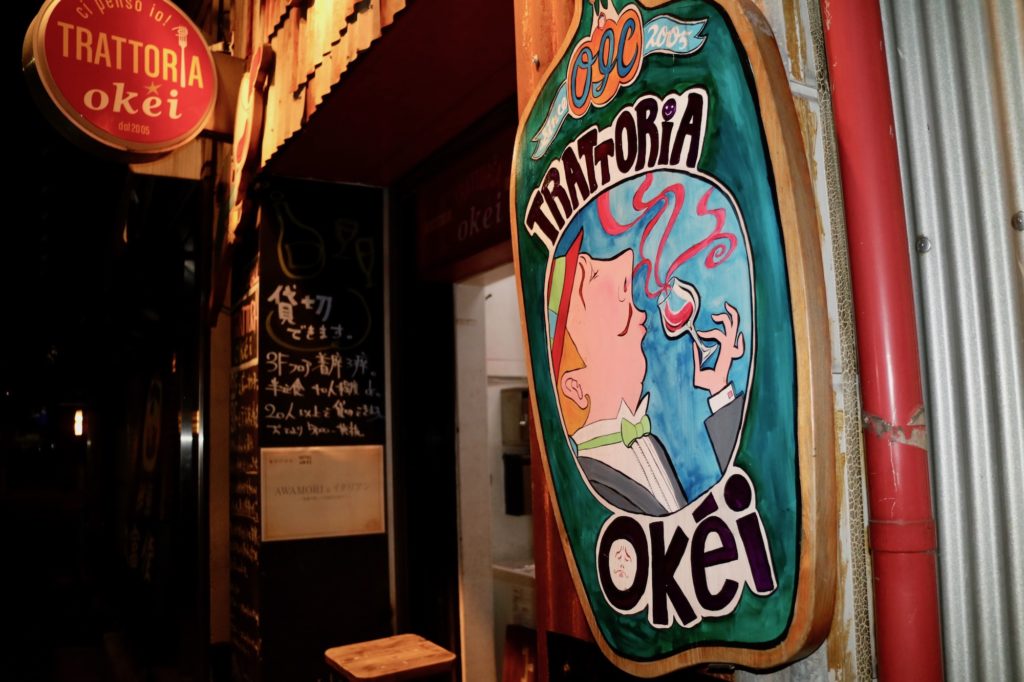
Awamori, including Kamimura Shuzo Distillery’s product lineup, can also be purchased online or at the Ginza Washita Shop (1F-B1F, Maruito Ginza Bldg., 1-3-9 Ginza, Chuo-ku, Tokyo), the official Okinawan grocery and omiyage store in Tokyo.
A local drink with a long history, awamori is a liquor which stands at the borderline of becoming a widely known and easily consumed alcohol not only in its hometown but across domestic and international borders. Its potentials and hidden powers are universal and versatile: it is up to you what you’ll make out of it.












Leave a Reply